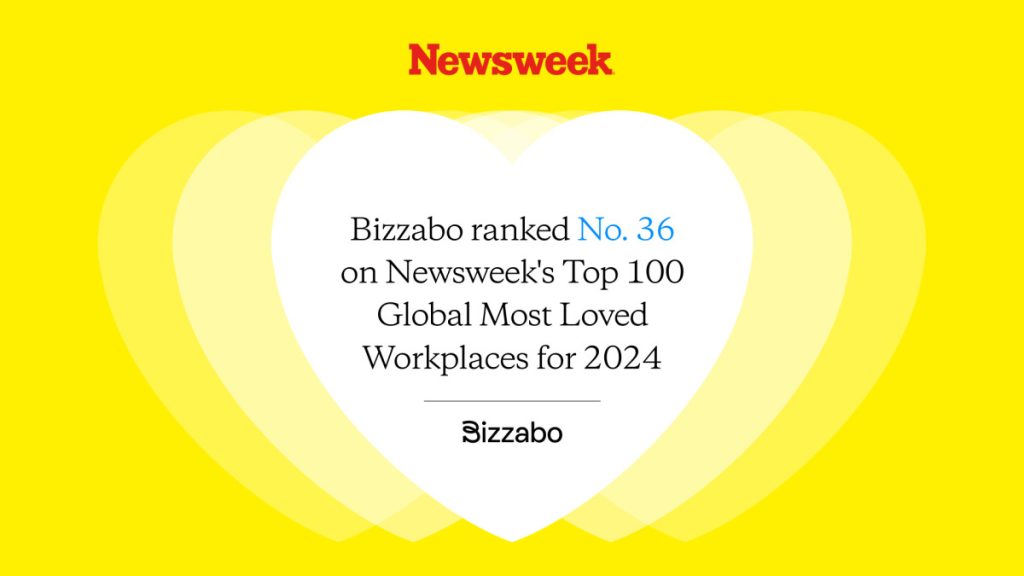The Top 10 Post-event Analysis Mistakes to Avoid


How much time are you spending on post-event analyses?
Even the most savvy and experienced event organizers often jump directly from one event to the next without looking at the data they collected from the previous event. In the rush to keep up with demanding schedules and deadlines, essential steps like tackling the post-event analysis can be overlooked.
When that happens, organizers miss out on valuable insights that could improve future events, like understanding attendee engagement and figuring out what kinds of event content and experiences attendees like the most. Reports are nice, but by skipping over post-event analysis, teams can struggle to connect the dots and see the bigger picture, making it harder to prove in-person conference ROI — something that 71.2% of event organizers have difficulty with.
By conducting a post-event analysis after each event, teams can continuously improve their event strategy, ensuring each event is more successful than the last.
What Is a Post-event Analysis?
A post-event analysis is a comprehensive review conducted after an event to assess its success and identify areas for improvement. The exercise involves examining data about attendee engagement, feedback, budget adherence, and overall event performance to collect actionable insights events teams can use to refine their strategies to enhance future events and maximize event ROI.
By understanding what worked well and what didn’t, organizers can make data-driven decisions to continuously improve the attendee experience and increase efficiency in event operations, making events more profitable.
10 Common Post-event Analysis Mistakes To Avoid
Looking to supercharge your event strategy and continuously improve event outcomes? While these aren’t all the mistakes events teams make after an event wraps up, avoiding these most common errors will get you moving in the right direction.
1. Ignoring Negative Feedback
Wanting to focus on the positive, some events teams ignore negative feedback during post-event analysis. As a result, they fail to identify and address areas that need improvement, potentially leading to the same issues at future events.
How To Overcome This Challenge
Remember that constructive criticism is key to growth. It offers valuable insights that can enhance the overall event experience. Proactively seek feedback via post-event surveys and embrace negative feedback, using it as fuel for continuous improvement.
2. Overlooking Social Media Engagement
Overlooking social media engagement during post-event analysis is a mistake because it causes teams to miss valuable insights into attendees’ sentiment, reach, and real-time reactions to events. Social media feedback can highlight successes and improvement areas, giving you a comprehensive view of the event’s impact and ideas on how to shape future strategies.
How To Overcome This Challenge
Using tools like Hootsuite, Buffer, and Sprout Social along with native platform insights to monitor mentions, likes, shares, and comments enables you to keep your fingers on the pulse of social sentiment in real time. This empowers you to collect real-time event feedback and gauge overall event success, then use that data to inform future marketing and engagement strategies.
3. Forgetting About Logistical Challenges
Forgetting about logistical challenges during post-event analysis prevents you from identifying inefficiencies that can negatively impact future events. Addressing these sorts of challenges is critical when it comes to improving event planning, execution, and the overall attendee experience. Some common logistical challenges include:
- Inadequate space
- Poor layouts
- Technical difficulties
- Insufficient staffing
- Parking issues
- Missing supplies
- Inefficient check-in processes
How To Overcome This Challenge
You can anticipate and mitigate potential logistical issues by conducting thorough pre-event and contingency planning. While you’re at it, create and utilize detailed checklists to make sure nothing slips through the cracks and encourage robust communication among the events team to keep everyone on the same page.
4. Focusing Only on Quantitative Data
Many events teams only look at quantitative data in post-event analysis, skipping over the qualitative insights that provide context and depth to attendee experiences and feedback. Qualitative data, which reveals nuanced sentiments that numbers alone can’t capture, includes the following:
- Feedback from open-ended survey questions
- Comments on social media
- In-depth interviews with participants
- Observational notes taken by staff
- Detailed event reviews
- Testimonials
- Speaker feedback
- Informal conversations with attendees
How To Overcome This Challenge
Aim to balance quantitative and qualitative data in post-event analysis, leveraging both, since each provides unique insights into attendee experiences and event success. Qualitative insights can enhance your analysis by offering context, identifying trends, and uncovering underlying motivations, helping you understand your event more deeply.

5. Missing the Bigger Picture
When you don’t think about the big picture, you can overlook key insights that impact the overall success of your event, hindering future planning. By aligning post-event analysis with overall event goals and objectives, you can ensure that the findings you uncover via analysis directly contribute to improving event outcomes and achieving organizational objectives.
How To Overcome This Challenge
By aligning the objectives of your event with those of your organization and measuring how well the event contributes to achieving those objectives, you can connect event outcomes to broader business goals — ensuring you see the big picture in all its glory. Conduct a holistic review of your event, end to end, using these tactics:
- Send out pre-event surveys
- Follow up with post-event surveys
- Analyze quantitative data (e.g., registration, ticket sales, revenue)
- Solicit input from partners, sponsors, speakers, and vendors
- Compare outcomes to benchmarks and KPIs
- Review qualitative data sources (e.g., social media mentions)
- Consider external factors, like economic indicators and market trends
6. Not Reviewing Vendor Performance
If you neglect to review vendor performance, you miss opportunities to assess the effectiveness of services, identify areas for improvement, or figure out where you may be able to negotiate better prices. Evaluating vendor performance ensures accountability, helps maintain quality standards, and informs future vendor selection processes, contributing to the success of future events.
How To Overcome This Challenge
Gather key metrics and feedback from vendors, including whether they meet deadlines, quality of service, responsiveness to communication, and overall satisfaction with the partnership. By analyzing this information, your team can identify areas of improvement, address any concerns or issues, and establish benchmarks for future partnerships, leading to better business relationships and stronger event outcomes.
7. Failing To Follow Up with Attendees
When you don’t follow up with attendees after the event, you miss a valuable opportunity to gather feedback, address concerns, and maintain engagement. As a result, your team loses out on insights that you could leverage to improve future events. Meanwhile, you may be damaging your relationships with attendees.
How To Overcome This Challenge

8. Ignoring Budget and Financial Analysis
When you ignore budget and financial analysis after an event, you miss critical insights into the event’s profitability, cost-effectiveness, and ROI. Evaluating budget performance allows organizers to identify areas of overspending, inefficiencies, or missed revenue opportunities, enabling better financial planning for future events.
How To Overcome This Challenge
Commit to using financial data to identify cost-saving opportunities, allocate resources more efficiently, and create realistic budgets based on past expenditures and revenue streams. Familiarize yourself with the common financial mistakes events teams make so you can avoid them. Here are some of the top missteps:
- Underestimating expenses
- Overspending in certain areas
- Failing to accurately track revenue sources
- Forgetting to account for hidden costs (e.g., ++ pricing)
- Underestimating the importance of contingency funds
- Overlooking opportunities for cost-saving measures
- Forgetting to update the budget regularly throughout the event
- Mismanaging vendor contracts and failing to get favorable terms
9. Overlooking the Performance of Event Technology
Event technology plays a critical role in enhancing attendee engagement, streamlining operations, and providing valuable data for post-event analysis. Overlooking event tech performance can lead to technical glitches, poor user experiences, and missed opportunities to uplevel the attendee experience.
How To Overcome This Challenge
To evaluate and improve the performance of event tech solutions, organizers can collect feedback from attendees and stakeholders to justify areas of improvement. Additionally, by thoroughly testing and troubleshooting solutions before and during an event, you can ensure that the platform you choose is working as designed and will enhance the event experience.
10. Skipping the “Lessons Learned” Section
When you skip the “lessons learned” section in your post-event analysis, you can miss out on valuable opportunities to reflect on successes and challenges and capture insights you can use to improve future events. By scheduling a dedicated debriefing session with the events team, you can set time aside for open and honest discussions, foster collaboration and accountability, and ensure your team gets smarter after each event.
How To Overcome This Challenge
Schedule a meeting after each event dedicated to reviewing event objectives, discussing successes and challenges, and identifying actionable takeaways for improvement. Allocate time for open discussion, encourage participation from all members, and do your best to capture actionable insights you can use to inform future event strategies. Here are a few strategies for sharing insights with the broader team:
- Create a comprehensive report summarizing key findings and lessons learned.
- Use visual aids like charts and graphs to present data effectively.
- Share the report with relevant stakeholders via email or a platform like Google Docs.
- Ask for feedback and ideas.
Get Started: Take a Smarter Approach to Post-event Analyses
When you make these easily avoidable post-event analysis mistakes, you damage your event potential because you leave valuable insights on the table, never to be discovered.
On the flip side, by thoroughly evaluating all aspects of the event, your team can identify successes to replicate, challenges to address, and opportunities for innovation — ensuring you have the data you need to continuously improve your event strategy.
For more information on how you can maximize your event ROI using post-event analysis, read our Complete Guide To Building a Post-event Report.



